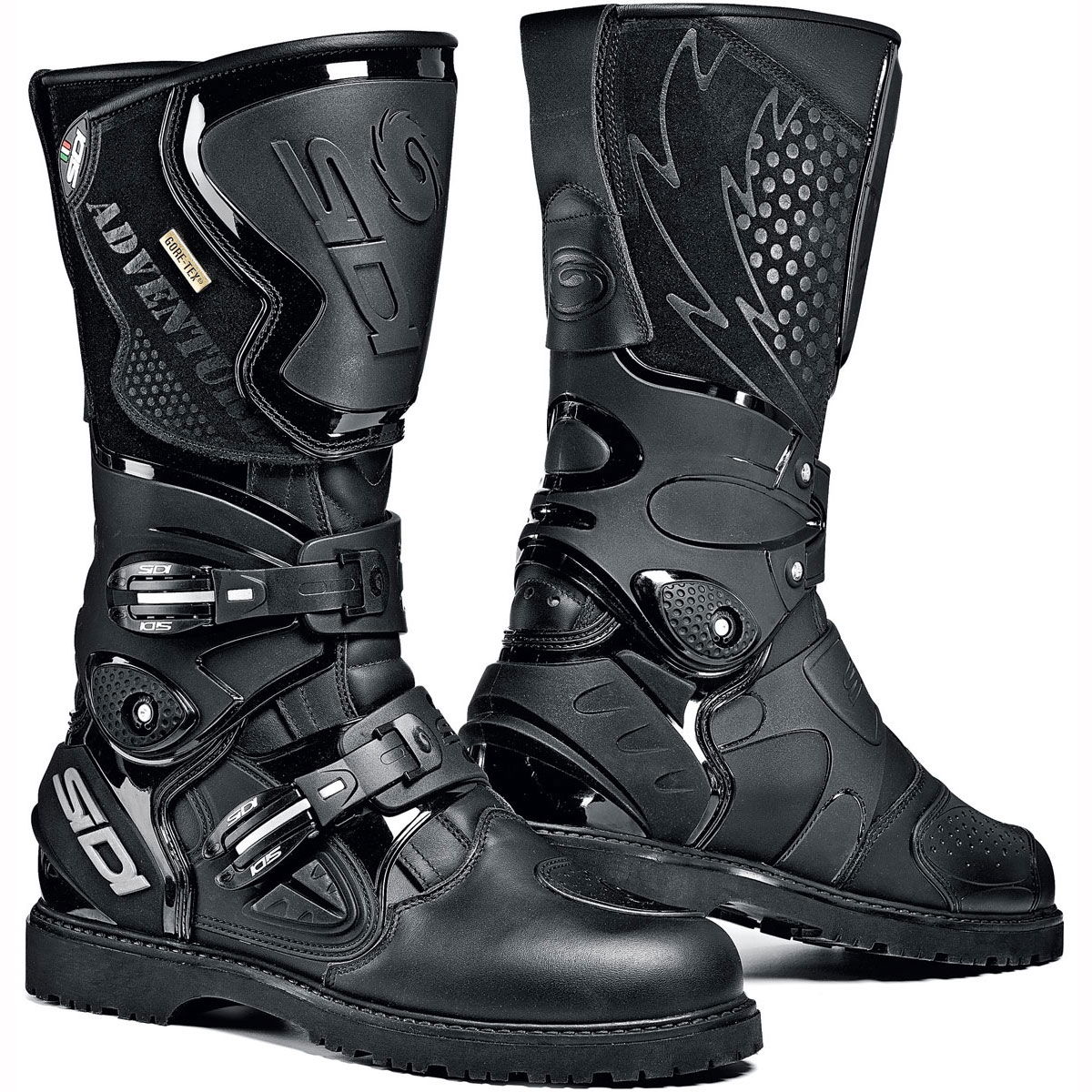Top 10 two-wheel drive motorcycles
There’s been so much interest over the years – so why aren’t we all riding them?

THE CONCEPT of two-wheel drive motorcycles has been around for ages and loads of manufacturers over the years have toyed with the idea. But there’s still never been a concerted effort to even offer customers the option of buying such machines.
That means it remains impossible to judge whether or not they’d turn out to be a success.
Something similar happened in the car market, and manufacturers that had shied away from offering all-wheel-drive technology were twice proved wrong in their assumption that there wasn’t a market.
It happened first just after WW2, when ex-army Jeeps flooded markets around the world and found favour among farmers and rural dwellers who valued their go-anywhere ability. Rover was the first firm to notice the trend and in 1948 revealed the Land Rover as the first proper attempt at a civilian machine with Jeep-like ability. Over the next three decades plenty of other firms joined the all-wheel-drive fray, but apart from a couple of attempts by niche players like Jensen, none could be convinced that there was a possible market for 4WD machines aimed at roads instead of muddy fields. In the late 1970s Audi was the company to break that mould, and as the 80s dawned its Quattro model proved that even where there was traction, driving all the wheels could be of benefit.
Given that both the companies that pioneered four-wheel-drive in cars – Land Rover and Audi – have gone on to huge success (along with others like Jeep and Subaru, which are equally associated with all-wheel-drive), it’s surprising that no bike firm has taken the gamble on a serious effort at two-wheel drive. It’s all the more surprising given that some of the niche 2WD machines out there have gained glowing reviews, and that 2WD prototypes from big firms have often been said to be impressive in their performance.
So here’s our list of the top 10 2WD efforts – be they production bikes, conversion kits, prototypes or concepts. Hopefully one day more of us will get the chance to judge for ourselves whether the technology has merit.
10. Ural sidecar outfit
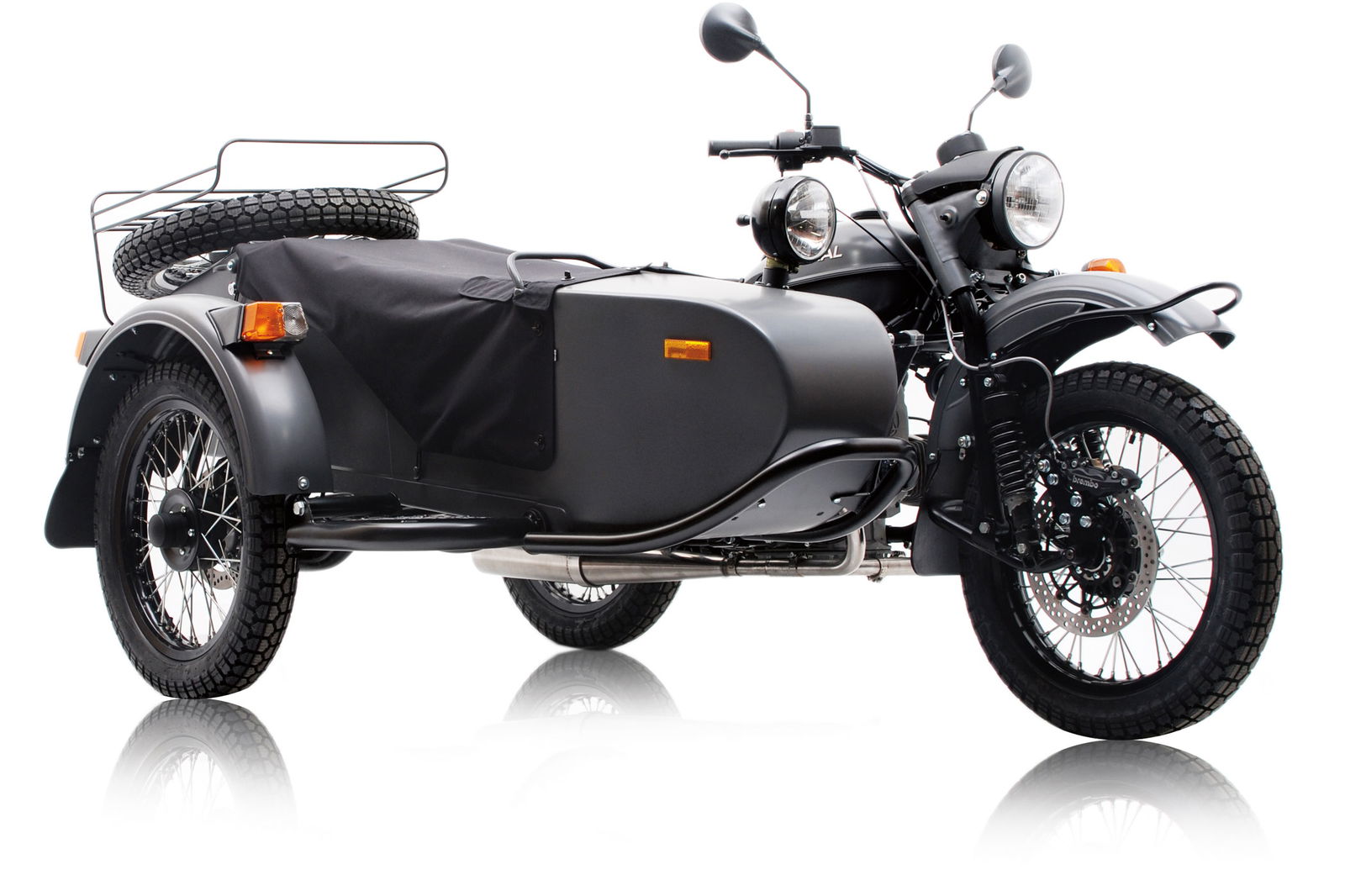
OK, so this is a bit of a cheat. After all, it’s got three wheels, so while two are driven it’s still not ‘all-wheel-drive’. However, it’s arguably the closest thing on this list to the Jeeps that kicked off the 4wd fad in cars, so gains inclusion on that front. Like the civilian Jeeps that appeared after WW2, the Ural is a descendant of military technology – the German WW2 BMW R75 sidecar and its near-identical Russian military rival of the same era. Still in production today, it’s probably also the single most successful ‘2WD’ motorcycle ever made, even if it doesn’t quite fill our all-wheel-drive, two-wheeled mission brief.
9. Suzuki XF5
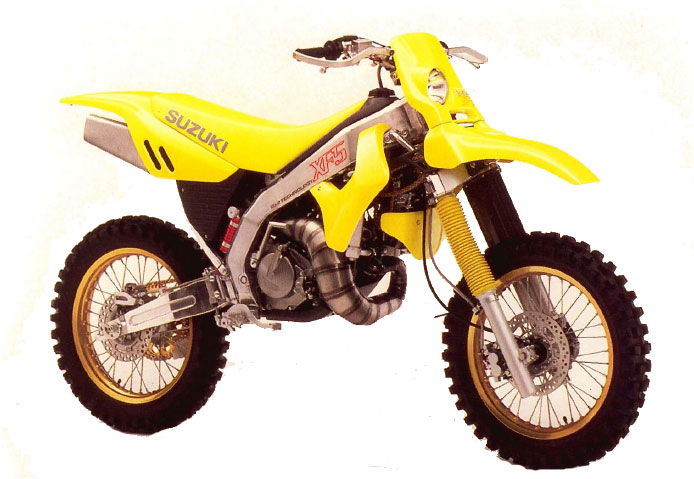
Back in the late 80s and early 90s it briefly looked like Suzuki might be the firm to take the ‘quattro’ leap and try to bring 2WD to the masses. The firm showed a whole run of two-wheel drive concept bikes including a trio of designs in 1991, all using the technology. They were the utilitarian XF4, XF425 Ugly Duck scooter and XF5 enduro. We’ve picked the 200cc, two-stroke XF5 for this list as it was by far the most convincing design. The Suzuki drive system to the front wheel incorporated a telescopic drive shaft running down in front of the left hand fork leg, itself driven by a chain system that took power from the engine to a transfer gearbox near the headstock. Complicated? Yes, but the whole lot only added 7.8kg to the bike’s weight.
8. Rokon
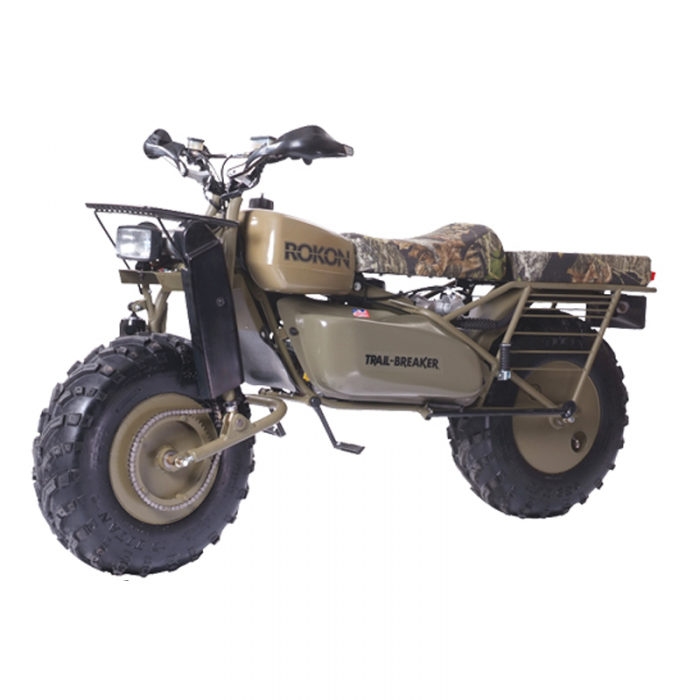
Up there with the Ural as the most successful production bike with 2WD, the Rokon has been around since the 60s and is probably the closest thing there’s ever been to an attempt at replicating the Land Rover on two wheels. Unfortunately, for most of its history Rokon got around the problem of combining 2WD with front suspension by simply getting rid of suspension altogether, relying on massive balloon tyres instead. More recently front suspension has been added to some models, though.
7. Drysdale 2x2x2
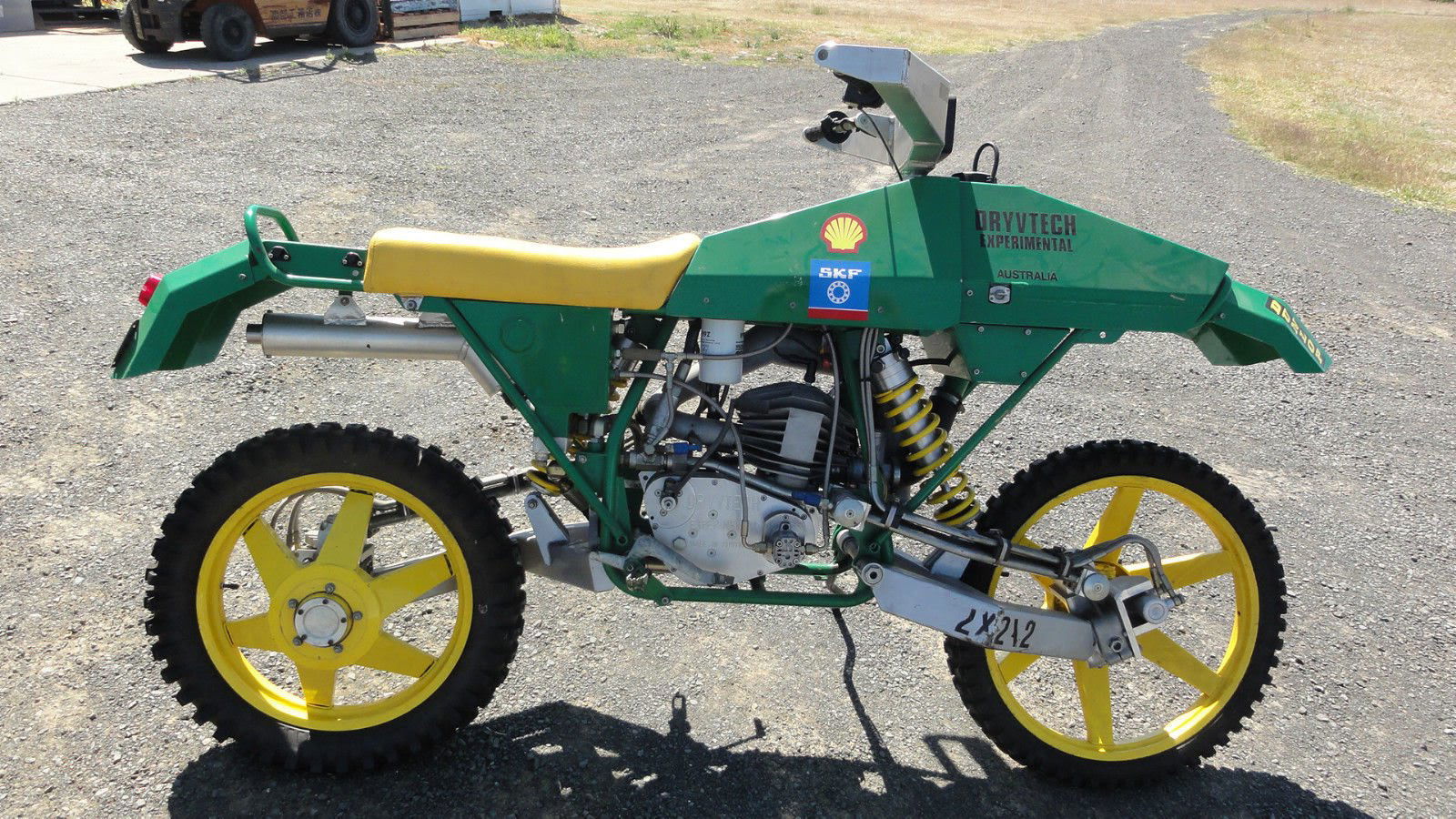
Aussie engineer Ian Drysdale is best known for his amazing eponymous V8 motorcycles but the 2x2x2 was an earlier project that illustrated the sheer breadth of his abilities. Featuring a one-off, hand-made two-stroke engine that he designed specifically for the bike, it uses hydraulics to drive everything. Both wheels are hydraulically powered and there’s steering at both ends too – also controlled hydraulically. Riding it is said to be an unfamiliar experience…
6. KTM 2WD prototype
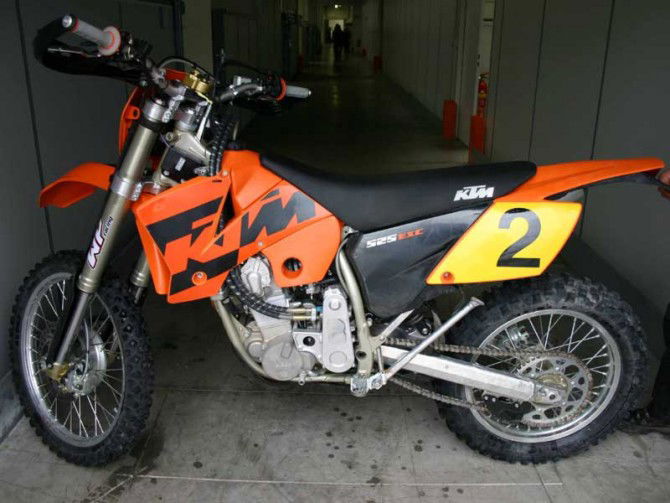
Back in 2004 KTM took the hydraulic route to two-wheel drive, creating a prototype machine that added a hydraulic pump driven by a short chain from the front sprocket and a hydraulic motor to the front hub. That meant there were only flexible hoses taking drive to the front wheel, allowing conventional suspension to be used and eliminating the need for additional gearboxes or long drive chains. Kurt Nicoll rode it at the time and reported it to be impressive, particularly during acceleration on dirt. Later, KTM also patented a hybrid 2WD bike with an electric motor powering the front hub and a conventional engine driving the rear wheel.
5. Wunderlich Hybrid BMW R1200GS

Funnily enough, last year BMW tuner Wunderlich took much the same idea as KTM’s earlier hybrid electric 2WD patent and applied it to a BMW R1200GS. A modern generation of batteries, generators and hub-mounted electric motors mean that conversions like this must surely be the future of two-wheel drive – allowing almost any bike to be adapted to drive both wheels. The question remains over the power delivery to the front wheel – with no mechanical connection its speed and torque needs to be mapped to harmonise with the rear wheel – but that’s surely something that is easily worked around with modern computers and software.
4. Yamaha PES2
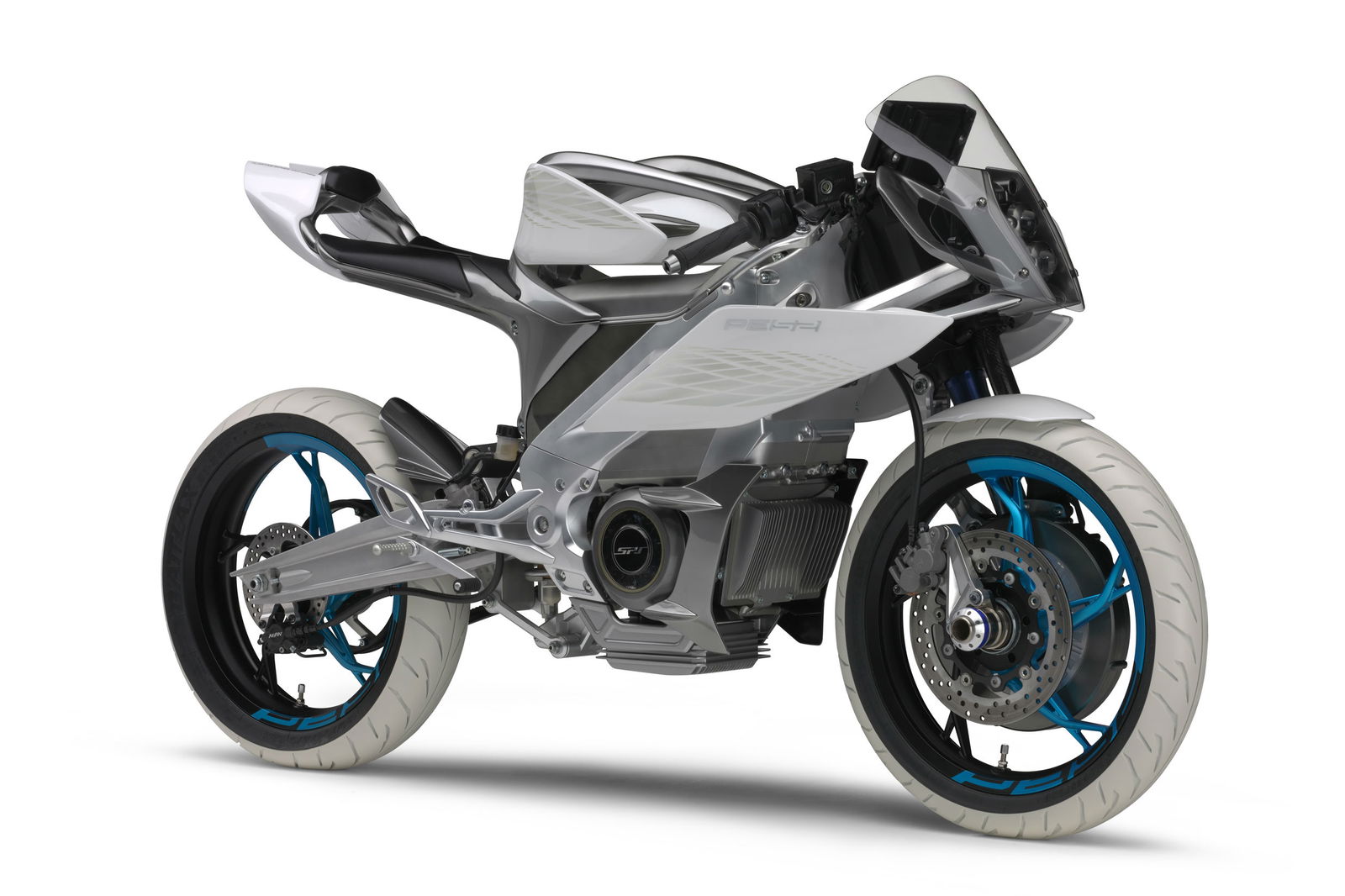
We keep getting teased that Yamaha will bring its PES electric sports bike concept to production – the firm’s annual report back in 2014 confirmed that it would – and the second-generation concept version included 2WD. With electric motors powering both the front and rear wheels, mapping the power delivery so both work in harmony should be straightforward, and the electric front motor can double as a brake to generate electricity as you slow down, too. With any luck, the eventual production model will adopt the same idea.
3. Suzuki Nuda
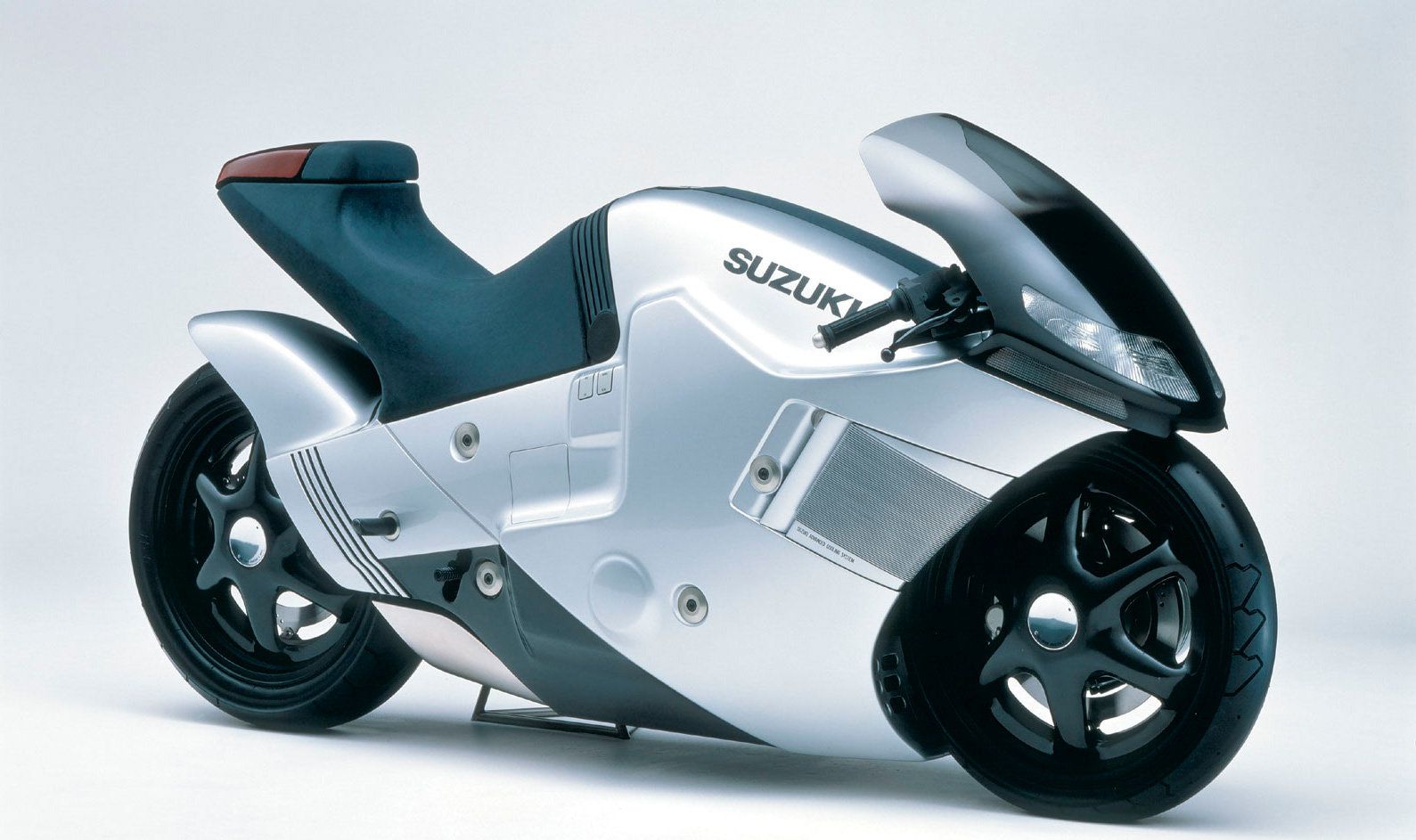
Given Suzuki’s fascination with 2wd in the 80s and early 90s, it’s only fair to include one of the concept bikes using the system. The Nuda is probably the most famous Suzuki concept ever made, and used swingarms both front and rear. These meant the firm could adopt shaft drive to both ends, with the shafts coming straight from the gearbox – one going backwards, as on a conventional shaft-drive bike, the other spurring forwards to power the front wheel. Apparently the Nuda was a working machine, too. Yamaha also considered using a similar arrangement on its hub-centre-steered GTS1000, and went as far as patenting a two-wheel-driven GTS.
2. Yamaha 2-Trac
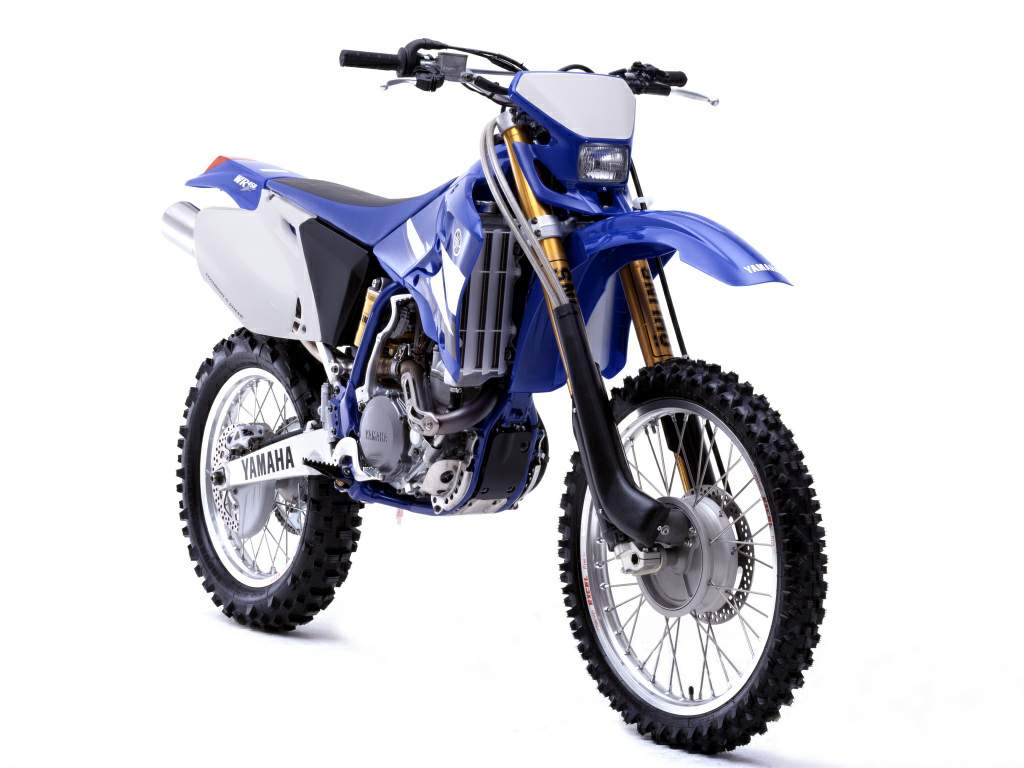
That two-wheel drive GTS1000 might never have made it, but Yamaha is among the select group of companies to have built a 2WD production bike – the WR450F 2-Trac. Made in tiny numbers, the two-wheel-drive Yamaha used a hydraulic Ohlins-developed system to power the front wheel, very similar to the one KTM tried on its prototype 2wd machine. Yamaha also experimented with the same 2WD set-up on a range of other bikes, up to and including the R1. As ever with two-wheel drive, riders questioned about the system were full of praise for its performance and the extra security it offered, particularly in wet and slippery conditions, but apart from the WR-F there were no production spin-offs. Keep an eye on eBay and you might turn up a WR-F 2-Trac, though.
1. Christini
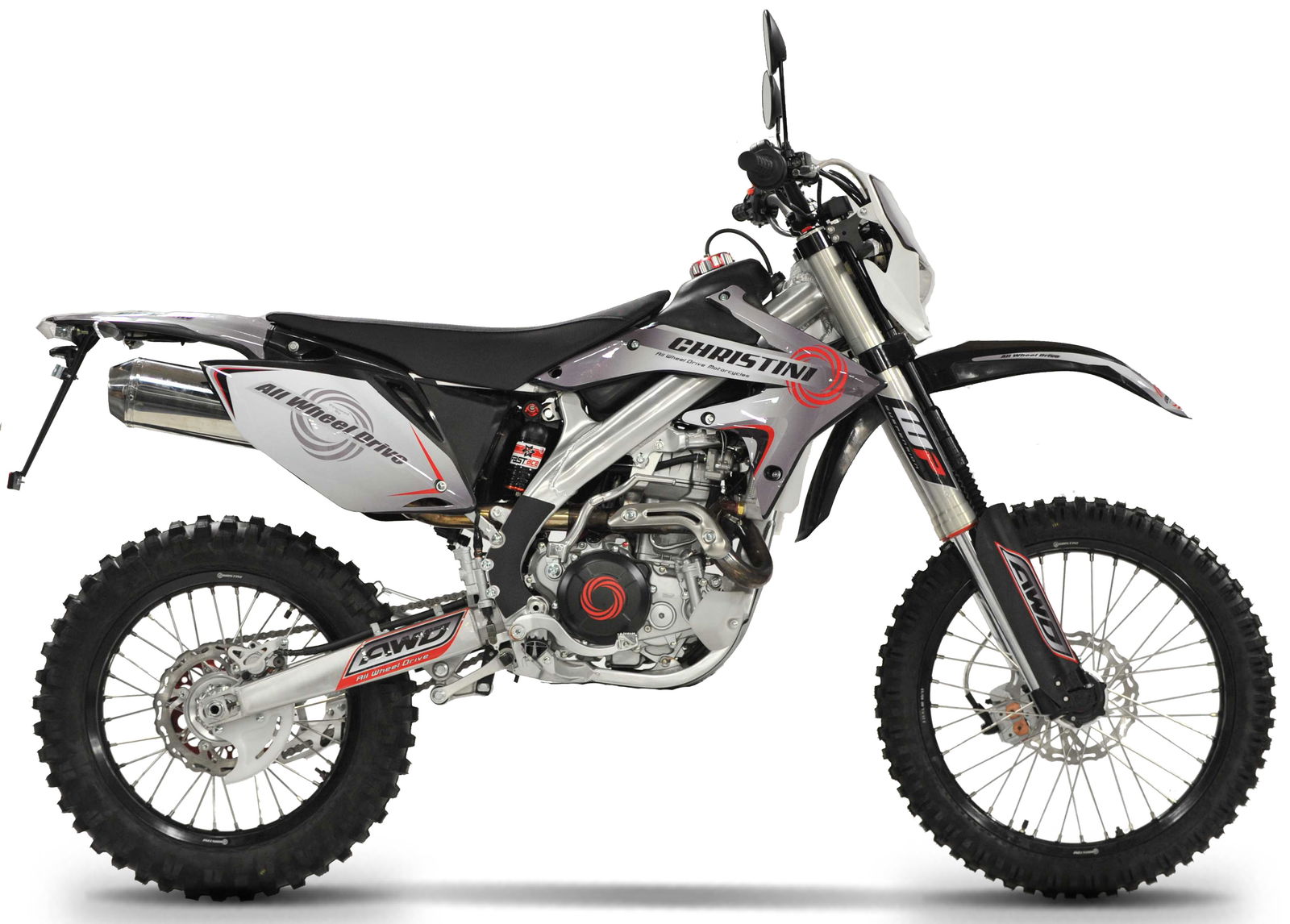
If you really want to experience two-wheel drive, this is probably the best and easiest way to do it. US firm Christini has been offering 2WD conversions for years. Its system is rather like the one on the Suzuki XF5, with a second chain driving a transfer box above the engine, then a shaft to another transfer at the headstock that takes the drive to a pair of telescopic shafts running alongside the front forks. Sounds complicated, and it is, but it’s also fairly light and can be applied to several bikes. The firm makes several machines of its own and sells conversion kits including modified frames for other models. Although focusing on off-road, it also made a road-racing super single back in 2008 to show how 2WD could help race bikes on tarmac.
Want more?
Top 10 European bike markets in 2016
Top 10 helmets under £250 in association with GetGeared
Top 10 summer boots in association with GetGeared

